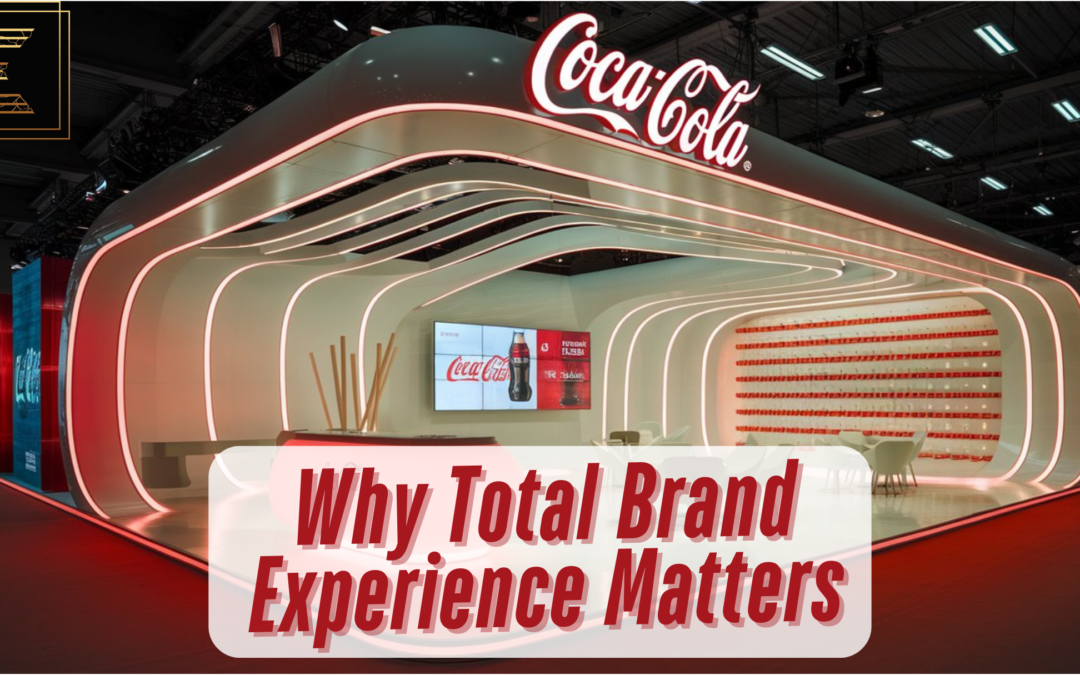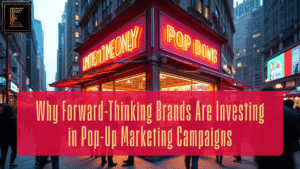In today’s competitive landscape, businesses are no longer just selling products or services—they are selling experiences. Customers want to feel connected to a brand at every touchpoint, from social media interactions to in-store visits. Total Brand Experience encapsulates every aspect of a consumer’s journey, shaping their perception, trust, and loyalty. Companies that prioritize this holistic approach often see a surge in customer retention, engagement, and overall brand value.
Understanding Total Brand Experience
Total Brand Experience refers to the collective impression customers develop about a brand based on every interaction they have with it. This includes marketing campaigns, customer service, digital presence, packaging, and even post-purchase support. It’s about crafting a seamless and emotionally compelling experience that aligns with the brand’s values and mission.
A successful brand experience involves multiple elements:
1. Brand Identity
The foundation of Total Brand Experience begins with a strong and consistent brand identity. This includes a compelling logo, a unique brand voice, color schemes, and an overall aesthetic that reflects the brand’s personality.
2. Customer Touchpoints
Every interaction a customer has with a brand, whether online or offline, contributes to their overall experience. These touchpoints include social media, websites, emails, packaging, customer service, and even store ambiance.
3. Emotional Connection
Consumers are more likely to engage with brands that evoke emotions. Whether through storytelling, personalized interactions, or impactful campaigns, creating an emotional bond enhances Brand Promotion Success.
4. Consistency Across Channels
A brand must ensure that its message, design, and values remain consistent across all platforms. Whether a customer visits a website, walks into a store, or interacts on social media, the experience should feel unified.
The Role of Brand Experience in Promotion Success
Increased Customer Loyalty
A well-crafted Total Brand Experience fosters trust and encourages repeat purchases. Customers who feel valued and connected to a brand are more likely to become loyal advocates.
Higher Engagement and Brand Awareness
Engaging brand experiences lead to organic word-of-mouth marketing. Satisfied customers share their positive experiences, leading to increased brand visibility and reach.
Competitive Differentiation
With countless brands competing for attention, a memorable experience sets a business apart. Unique and meaningful interactions make a brand more recognizable and preferred over competitors.
Enhanced Customer Lifetime Value (CLV)
When customers consistently enjoy interactions with a brand, they tend to spend more and stay loyal for longer. Investing in a great brand experience translates into higher revenue over time.
Strategies to Enhance Total Brand Experience
Personalization
Modern consumers expect tailored experiences. Brands can use AI-driven analytics and customer data to offer personalized recommendations, email campaigns, and customized offers.
Omnichannel Approach
Ensuring a seamless experience across multiple channels—physical stores, websites, apps, and social media—ensures consistency and convenience for customers.
Strong Customer Service
Responsive and empathetic customer service plays a crucial role in the Total Brand Experience. A brand’s reputation can be significantly enhanced by providing prompt, helpful, and personalized support.
Experiential Marketing
Hosting brand events, pop-up shops, or interactive campaigns provides immersive experiences that leave a lasting impact on consumers.
User-Generated Content (UGC)
Encouraging customers to share their experiences through reviews, social media posts, or testimonials creates authenticity and enhances trust.
Real-World Examples of Successful Total Brand Experience
Apple: Seamless Integration
Apple’s ecosystem, from retail stores to customer support and product design, is a prime example of Total Brand Experience done right. Their consistent branding, intuitive products, and top-tier customer service foster deep customer loyalty.
Nike: Emotional Connection
Nike excels in emotional branding. Through compelling storytelling, inclusive marketing, and community-driven initiatives, the brand establishes strong emotional connections with consumers.
Starbucks: Consistency Across Channels
From store ambiance to mobile app rewards, Starbucks ensures a consistent and engaging experience for customers worldwide. Their personalization strategies, such as the Starbucks Rewards program, drive high customer retention.
Measuring the Effectiveness of Brand Experience
To refine and improve Total Brand Experience, businesses must analyze key performance indicators (KPIs). These include:
- Customer Satisfaction Score (CSAT): Measures how happy customers are with their experience.
- Net Promoter Score (NPS): Evaluates customer willingness to recommend the brand.
- Customer Retention Rate: Tracks repeat customers and long-term engagement.
- Social Media Engagement: Measures how actively consumers interact with brand content.
- Conversion Rate: Determines how many interactions lead to sales or desired actions.
Conclusion
In the modern business world, creating a Total Brand Experience is no longer optional—it’s a necessity for success. From first impressions to long-term loyalty, every brand interaction should reinforce the company’s values, mission, and identity. Brands that invest in a seamless and meaningful experience see higher engagement, stronger customer relationships, and long-term profitability. Businesses that prioritize Total Brand Experience will always have a competitive edge in achieving Brand Promotion Success.
FAQs
1. What is Total Brand Experience?
Total Brand Experience refers to the overall perception customers have of a brand based on all their interactions, including digital presence, customer service, packaging, and marketing efforts.
2. How does brand experience impact customer loyalty?
A well-crafted brand experience builds trust, emotional connection, and consistency, leading to higher customer retention and advocacy.
3. What are some key elements of a successful Total Brand Experience?
Key elements include brand identity, emotional engagement, personalized interactions, seamless omnichannel presence, and exceptional customer service.
4. How can businesses measure the effectiveness of their brand experience?
Businesses can track metrics such as Customer Satisfaction Score (CSAT), Net Promoter Score (NPS), customer retention rate, social media engagement, and conversion rates.
5. How can small businesses improve their Total Brand Experience?
Small businesses can enhance their brand experience by focusing on personalized interactions, maintaining consistent branding, offering exceptional customer service, and engaging customers through social media and community-building efforts.By integrating a well-thought-out Total Brand Experience strategy, businesses can create lasting relationships with customers, driving Brand Promotion Success and long-term growth.







